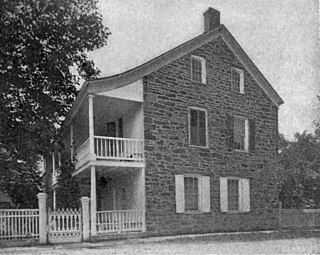
Carolee Schneemann was an American visual experimental artist, known for her multi-media works on the body, narrative, sexuality and gender. She received a B.A. in poetry and philosophy from Bard College and a Master of Fine Arts from the University of Illinois. Originally a painter in the Abstract Expressionist tradition, Schneeman was uninterested in the masculine heroism of New York painters of the time and turned to performance-based work, primarily characterized by research into visual traditions, taboos, and the body of the individual in relation to social bodies. Although renowned for her work in performance and other media, Schneemann began her career as a painter, stating, "I'm a painter. I'm still a painter and I will die a painter. Everything that I have developed has to do with extending visual principles off the canvas." Her works have been shown at the Los Angeles Museum of Contemporary Art, the Museum of Modern Art in New York, the London National Film Theatre, and many other venues.

Louis Du Bois was a Huguenot colonist in New Netherland who, with two of his sons and nine other refugees, founded the town of New Paltz, New York. These Protestant refugees fled Catholic persecution in France, emigrating to the Rhenish Palatinate and then to New Netherland, where they settled in Wiltwyck and Nieuw Dorp, settlements midway between New Amsterdam and Beverwyck before ultimately founding New Paltz.

Sugar Hill is a National Historic District in the Harlem and Hamilton Heights neighborhoods of Manhattan, New York City, bounded by West 155th Street to the north, West 145th Street to the south, Edgecombe Avenue to the east, and Amsterdam Avenue to the west. The equivalent New York City Historic Districts are:

Historic Huguenot Street is located in New Paltz, New York, approximately 90 miles (140 km) north of New York City. The seven stone houses and several accompanying structures in the 10-acre National Landmark Historic District were likely built in the early 18th century by Huguenot settlers fleeing discrimination and religious persecution in France and what's now southern Belgium. After negotiating with the Esopus Indians, this small group of Huguenots settled on a flat rise on the banks of the Wallkill River in 1678. The settlers named the site in honor of Die Pfalz, the region of present-day Germany that had provided them temporary refuge before they came to America. Recent archaeological finds indicate that the immediate area settled by the Huguenots was occupied by Native Americans prior to European contact. The site is one of the oldest continuously inhabited settlements in the United States.

The William Monroe Trotter House is a historic house at 97 Sawyer Avenue, atop Jones Hill in the Dorchester neighborhood of Boston. It was the home of African-American journalist and civil rights activist William Monroe Trotter (1872–1934). He and his wife Geraldine Louise Pindell moved into the two-story wood-frame home when they were married in June 1899. The house was designated a National Historic Landmark in 1976 for its association with Trotter, whose activism was influential in the founding of the National Association for the Advancement of Colored People.

The Jenkins–DuBois Farm and Mill Site is located along Jenkinstown Road in Gardiner, Ulster County, New York, United States. It was started by settler Lambert Jenkins in 1793 with a stone house and mills on land part of the original Huguenot Patent owned by Louis DuBois of nearby New Paltz. The Jenkins–DuBois descendants still live on the land today.

The W.E.B. Du Bois Boyhood Homesite is a National Historic Landmark in Great Barrington, Massachusetts, commemorating an important location in the life of African American intellectual and civil rights activist W.E.B. Du Bois (1868–1963). The site contains foundational remnants of the home of Du Bois' grandfather, where Du Bois lived for the first five years of his life. Du Bois was given the house in 1928, and planned to renovate it, but was unable to do so. He sold it in 1954 and the house was torn down later that decade.

The Nelson Rhodehouse House is a historic house located in the Cotuit village of Barnstable, Massachusetts.

The Boice House is located on Fair Street in Kingston, New York, United States. It was first built around 1850 in the Greek Revival architectural style.

Ezikial Perry House is a historic home located at Jerusalem in Yates County, New York, USA. It is a two-story, Italianate style frame dwelling built about 1870. It sits on a stone foundation and has a low-pitched hipped roof with dormers and cupola. Also on the property are two wood frame sheds dated to about 1870.

John McGeer House is a historic home located at Moravia in Cayuga County, New York. It is a two-story, brick, Italianate style residence, with a rear wing of frame construction. The house was built in 1871. Also on the property is a frame wagon shop, built or expanded to its present form in about 1884.

Tuthill-Green House is a historic home located at Moravia in Cayuga County, New York. It is a 2+1⁄2-story, frame, Queen Anne–style residence. The house was built about 1887. Also on the property is a 2+1⁄2-story, frame carriage house, built about 1885.

William A. Witbeck House is a historic home located at Stuyvesant in Columbia County, New York. It was built about 1812 and is a 1+1⁄2-story, five-by-two-bay, wood-frame dwelling in a transitional Dutch / Federal style. It is topped by a gable roof with seam metal roofing and the exterior is sheathed in clapboards.

Benjamin C. Tousey House, also known as "The Willows," is a historic home located at Clinton in Dutchess County, New York. The property includes six contributing buildings and one contributing structures. They are the main house, a stone cottage with garage in the basement, a stone garage, a frame lodge, two frame sheds, and a gazebo. The main house was built in 1914-1915 and is a compactly designed, two story rectangular house with arelatively low pitched roof. The ground floor is clad in wood shingles and the upper floor in stucco and half timbers. It features a complex arrangement of balconies and terraces and is representative of the American Craftsman style.

Mulhern House was an historic home located at Wappingers Falls in Dutchess County, New York. It was built about 1815 and was a two-story, frame double residence. Also on the property was a contributing shed. It is the only workers' residence that survived intact from the initial period of industrial development at Wappingers Falls. The building was destroyed in a gas explosion in February 1994. A residential building was subsequently constructed on the property at the end of Market St. where it intersects with Franklin and Fulton Streets.

The Williams–DuBois House is located at Grace Lane and Pinesbridge Road in New Castle, New York, United States. It was built by an early settler of the area during the Revolutionary War. In 1989 it was listed on the National Register of Historic Places.

The Caleb Hyatt House is a historic house located at 937 White Plains Post Road in Scarsdale, Westchester County, New York.

The W.C. Ball House is a historic house located in Fairfield, Iowa.

The Morton Mansion was built in 1903 in Douglas, Wyoming for the family of John Morton. Morton was a sheep rancher who also served as an elected official, banker and civic leader in Douglas. The house was designed by Wyoming architect William DuBois.
The Hasbrouck family was an early immigrant family to Ulster County, New York, and helped found New Paltz, New York. The Hasbrouck family were French Huguenots who fled persecution in France by moving to Germany, and then the United States. Two brothers, Jean II and Abraham, are the ancestors of almost all individuals in the United States with the last name "Hasbrouck," or some variation.

















